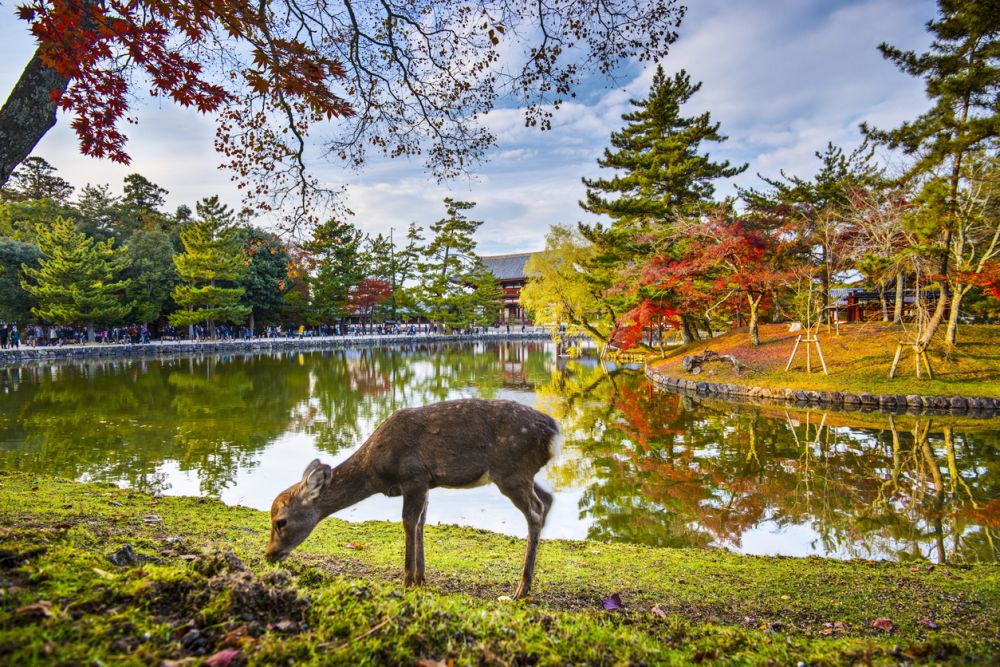

Nara Park's history as a tourist destination dates back to the late 19th century. Established in 1880, it is one of the oldest parks in Japan. Its establishment as a tourist attraction coincides with the Meiji Period, when Japan opened its doors to the West and began to modernize. This period saw a rise in domestic tourism, as the Japanese started traveling within their country, discovering cultural and historical treasures, among which was Nara Park.
The park is renowned for its historic monuments and is closely tied to the Asuka and Nara periods, when Nara was the capital of Japan. The park houses eight UNESCO World Heritage Sites, including the Todai-ji Temple, known for the Great Buddha statue, and the serene Kasuga-taisha Shrine, showcasing the deep-rooted heritage that has been preserved for centuries. These landmarks have been pivotal in attracting visitors worldwide, keen on exploring Japan's rich cultural tapestry.
What sets Nara Park apart and contributes to its popularity among tourists are its hundreds of freely roaming deer. Considered messengers of the gods in the native Shinto religion, these gentle creatures have become a symbol of the city and a major draw for visitors. The ability to interact with the deer, once exclusively reserved for nobility but now open to all, has solidified the park's status as a must-visit location.
Facing the 21st century, tourism in Nara Park has evolved with global trends. In response to the digital age, the park and surrounding sites have augmented their visitor experience with modern technology, offering apps and digital guides to cater to the tech-savvy traveler. Moreover, the recent rise of sustainable tourism has seen the park implement initiatives to preserve its natural and cultural integrity for future generations. Eco-friendly practices, such as restrictions on plastic use and promoting the use of eco-bags, reflect the park's commitment to sustainability.
The COVID-19 pandemic brought about significant shifts in travel behavior, with health and safety becoming a top priority. Nara Park adapted by introducing measures to ensure a safe environment for visitors, such as social distancing guidelines and enhanced sanitation procedures. The park has also seen a trend toward more outdoor activities, as travelers seek natural spaces that allow for physical distancing, fresh air, and tranquil experiences.
Looking into the future, tourism in Nara Park is expected to continue growing, with an emphasis on quality rather than quantity. Efforts to balance tourist numbers with conservation, provide immersive educational experiences, and showcase the region's seasonal beauty all year round indicate a strong and sustainable trajectory for Nara Park as a leading tourist destination in Japan.